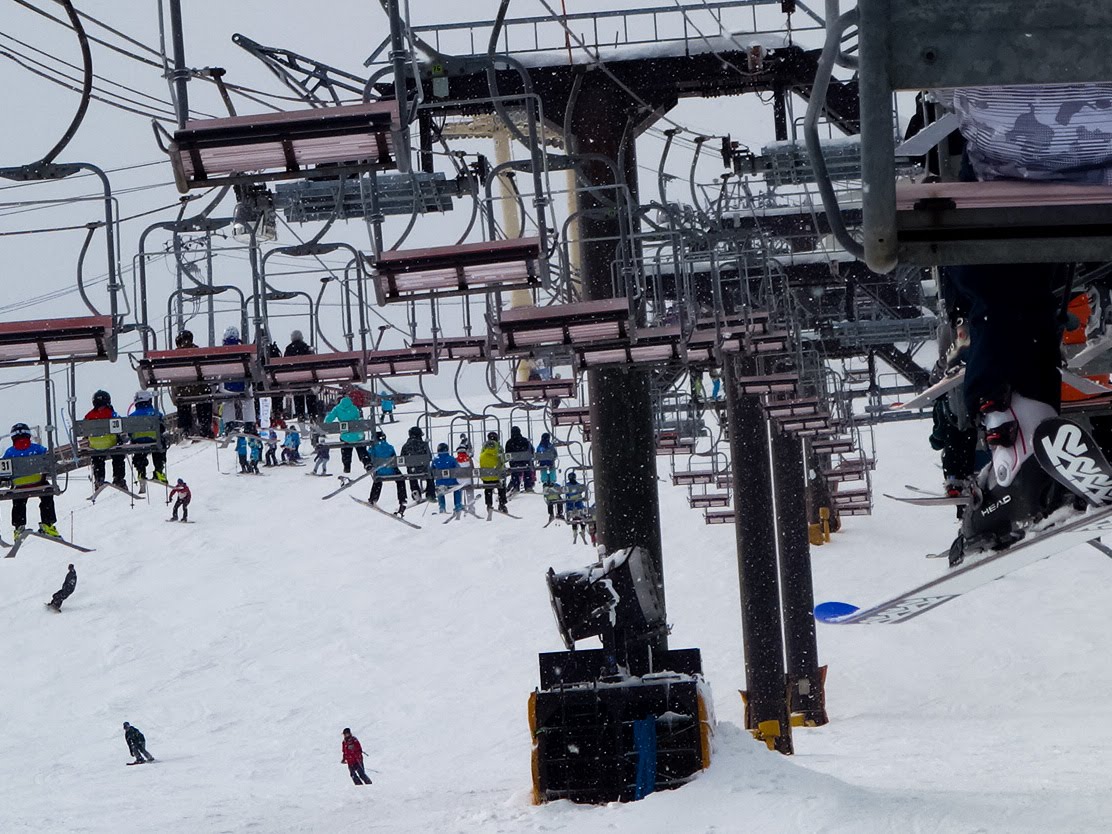This series explains various aspects of Japan's ski resorts from various perspectives in order to get to know them in more detail. This time, we would like to introduce you to the "cableway" that everyone is indebted to if they are skiers and snowboarders. Reading from the first part
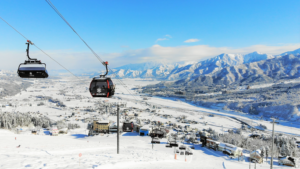
An advanced skier must be able to talk about the fun of the cableway
Well, in the first part, we summarized the three special classifications of cableways and the details of each, but in the second part, let's organize the history and characteristics of each according to the general classification of chairlifts, gondolas, and ropeways. . If you're an advanced skier, you'll be annoyed by your fellow skiers by ranting about the cableway pranks here.
[Ropeway] Overwhelming instantaneous mobility! Existence itself is a tourist resource
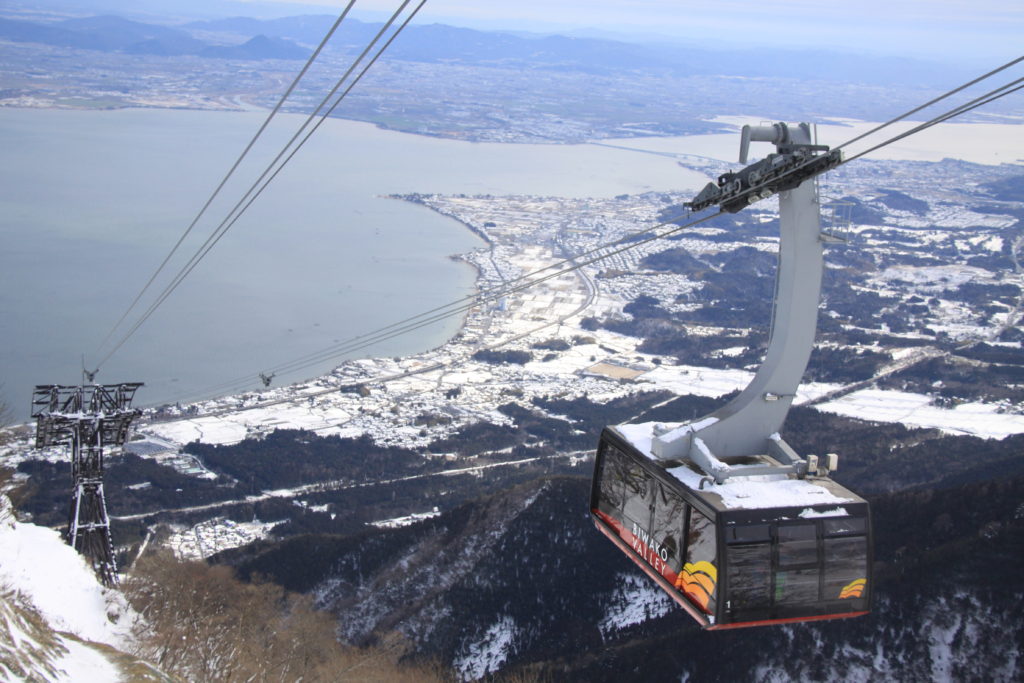
As I touched on in the previous part, there are facilities that refer to the circulating cableway, which is generally called a ``gondola,'' as a ``ropeway,'' but here, a crossing type that carries medium to large box-shaped carriers is referred to as a ``ropeway.'' I want to treat it as a ropeway.
The facility that calls itself a ropeway has a surprisingly long history. After all, it existed in the Meiji period. However, it was a simple one with only one small carrier going back and forth.
According to this site, the first ski resort in Japan was constructed in 1956 at what is now Zao Onsen. Currently, the main ski resorts with ropeways are Otaru Tenguyama , Furano , Hakkoda , Shizukuishi , Tengendai , Onsen , Muikamachi Hakkaisan , Yuzawa Kogen , Gala Yuzawa , Kagura , Tanigawadake Tenjindaira , Ryuo , Tsugaike Kogen , Pilatus Tateshina , Senjojiki , Biwako Valley , Ishitsuchi ... and so on.
Of these, Zao Onsen currently has two ropeways: the Zao Ropeway Sanroku Line and the Zao Chuo Ropeway (there is also the Zao Ropeway Sanroku Line, which is a circular Funitel).
Yuzawa Kogen also has the world's largest 166-seater, and is connected to Gala Yuzawa by a ropeway called Landau. Kagura also has two ropeways. The ropeway itself is a powerful tourism resource, and many of these ski resorts are year-round tourist destinations.
All cableways do not have a power unit on the carriage itself.
A motor at the terminal station rotates the pulley and pulls the rope to move the carrier. Ropeways, in particular, require a lot of electricity. At Yuzawa Kogen, where there is a huge ropeway, 6,600 volts of electricity is used to pull up to the summit through electric wires buried in the slopes. Ropeways are vulnerable to strong winds, and standards such as deceleration and stopping are determined according to the wind speed. However, depending on the direction of the wind, there may be cases where there is no effect. For that reason, the staff may judge the degree of deceleration based on their experience. In fact, the natural enemy of strong winds is thunder, and if it becomes a flash or a thunder, the operation will be stopped at once.
The weight of the carrier for the Yuzawa Kogen ropeway is about 10 tons. Furthermore, when it is full of people with boards, it will be close to 20 tons. The tough rope from which it is hung is the core of a highly safe ropeway system.
[Gondola] Constant mobility is number one! In fact, the history at the ski resort is the newest
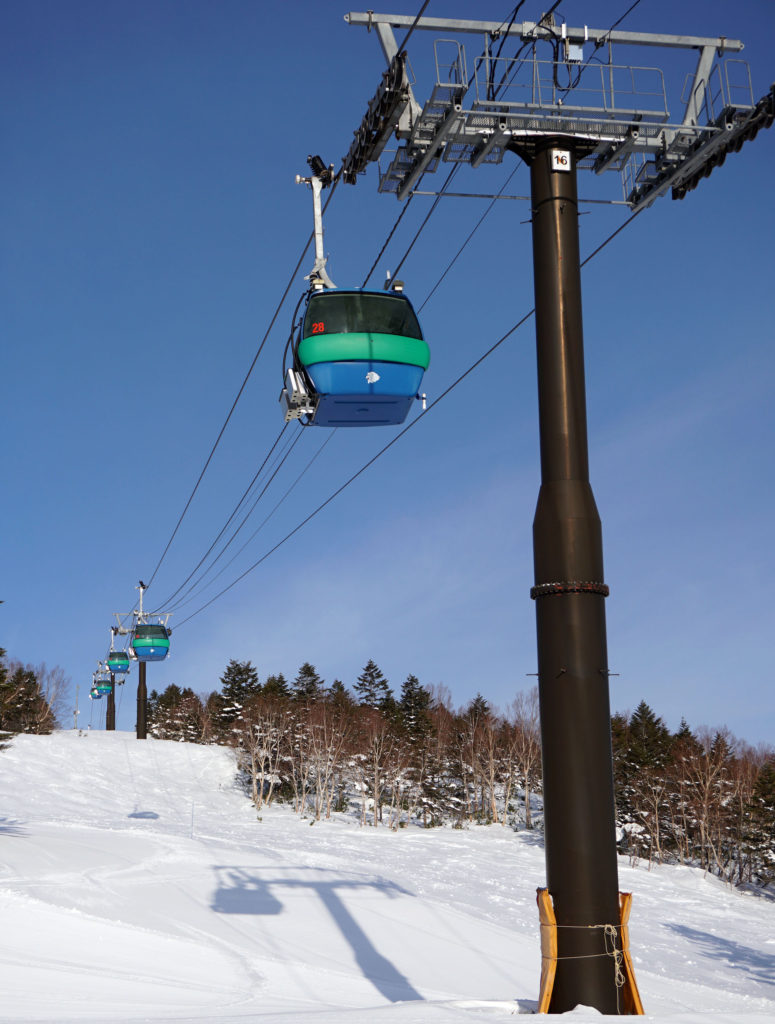
Compared to chairlifts, gondola carriages are characterized by a greater variety of carriage designs and sizes.
Its strength is its constant mobility.
Compared to the ropeway, the number of people that can be transported with one carrier is inferior, but if the challenge is to see how many people can be transported in an hour, the gondola that circulates the carriers is the winner. It first appeared in a domestic ski resort in 1973, much later than the ropeway. It was erected on what is now Hakuba Goryu
In 1976, the famous egg-shaped carrier gondola (partially replaced) was built on Higashi Tateyama in Shiga Kogen the Hakuba Happo-one Ropeway named "Hakuba Cable" (constructed in 1958) was renewed with a gondola. Naeba 's gondola debuted in 1985.
It was a symbolic event of the ski boom in the latter half of the 1980s that long queues formed for the gondolas on these popular slopes for more than an hour.
Well, how fast is the gondola? There are differences depending on the facility, but in the case of Maiko Resort, for example, the maximum speed is 5 m/s. Accelerate or decelerate by pressing a button that allows you to adjust the speed in 1m increments.
The gondola's weakness is crosswinds. Funitel is a type that compensates for this weakness, but it is still a minority in Japan. In Maiko, the principle is to slow down when the wind blows at 10 m/s and stop when it reaches 15 m/s. However, the situation changes depending on the wind direction. If there is a crosswind, it may slow down even if the wind speed is 5 to 6 m/s.
During the night, the gondola is stowed at the station. The number of carriages in operation differs depending on the day, and at Maiko mentioned above, there are a maximum of 100 and a minimum of 80. In other words, the number is increased or decreased depending on the congestion forecast. In the case of gondolas, the required equipment in the carriage is "a device that allows mutual communication between the station and the carriage, and between each station". Although not particularly limited, it is often a wireless device.
Currently, many ski resorts have problems with gondolas. It is a response for fat skis and twin tip skis. Although more and more ski resorts are renovating their ski racks, the reality is that there are still some that are not fully equipped.
[Chair lift] The cableway category with the largest number of units. Made great strides in the 80's
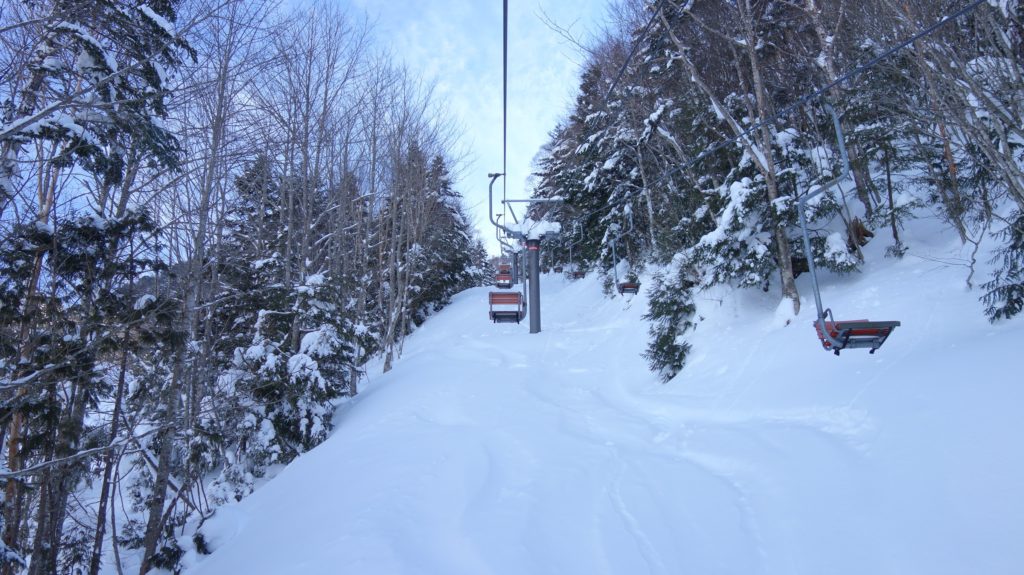
A chairlift is literally a lift for chairs. Generally speaking, "lift" refers to this type. previous , there are fixed circulation type and automatic circulation type .
Don't you usually feel that "this lift is slow" at the ski resort? The first is the former.
In the fixed circulation system, the carriage is fixed to the rope, so basically the speed cannot be changed between the carriage for getting on and off and the carriage for running.
However, the staff may slow down when children get on at the stop. In addition, there is a way to safely ride a fast lift by installing an auxiliary device such as a belt conveyor at the stop, but there are few such devices in Japan. As a result, today it is unlikely to become the main lift in ski resorts, nor is it suitable for long-distance routes.
On the other hand, the automatic circulation type can travel at high speed, but it slows down when getting on and off, so even beginners and children can easily get on and off.
There are only merits when thinking in terms of passengers first. However, for the ski resort side, the negative factor is that it costs more than the fixed circulation system. There is also a difference in the capacity of the carrier between the chairlifts. Surprisingly, Japan's first lift built for the Occupation Army was designed for two people to ride back to back. But this is a very special case. Since 1948, in the process of popularization in Japan, chairlifts were single lifts.
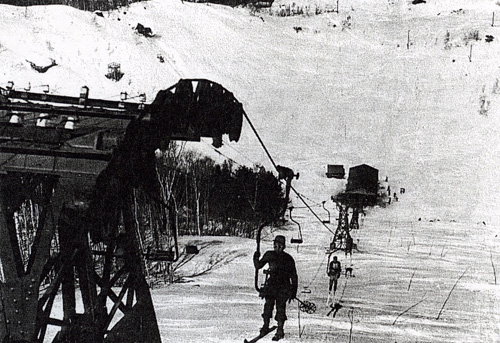
Shiga Kogen Maruike Ski Lift Source: Kajima Corporation
There are various theories about the first pair lift for private use, but in any case, it started to spread in the 1970s. Then, in the early 1980s, on the eve of the unprecedented ski boom, the automatic circulation type triple lift (three-seater) was introduced, followed immediately by the quad lift (four-seater). Chairlifts have entered a high-speed era. According to the current regulations, the maximum speed of the automatic circulation system is 5m/s.
Furthermore, around 1988, when the bubble economy was booming, lifts with hoods appeared. Also, I would like to mention that the lift has a safety bar from this era. Since then, chairlifts have continued to evolve, with the introduction of footrests to stabilize the feet of passengers and cushion-type seats to improve ride comfort.
Finally, I would like to mention a question that every skier has had in their minds on the lift.
──Will anyone fall off the lift?
The answer is yes. He seems to be rare. However, in Japan, the height of the chairlift carrier is determined by law, so even if it falls, it is unlikely to lead to a serious accident.
[Bonus] Small story about cableway
Finally, I would like to list some small facts about the cableway in a Q&A format.
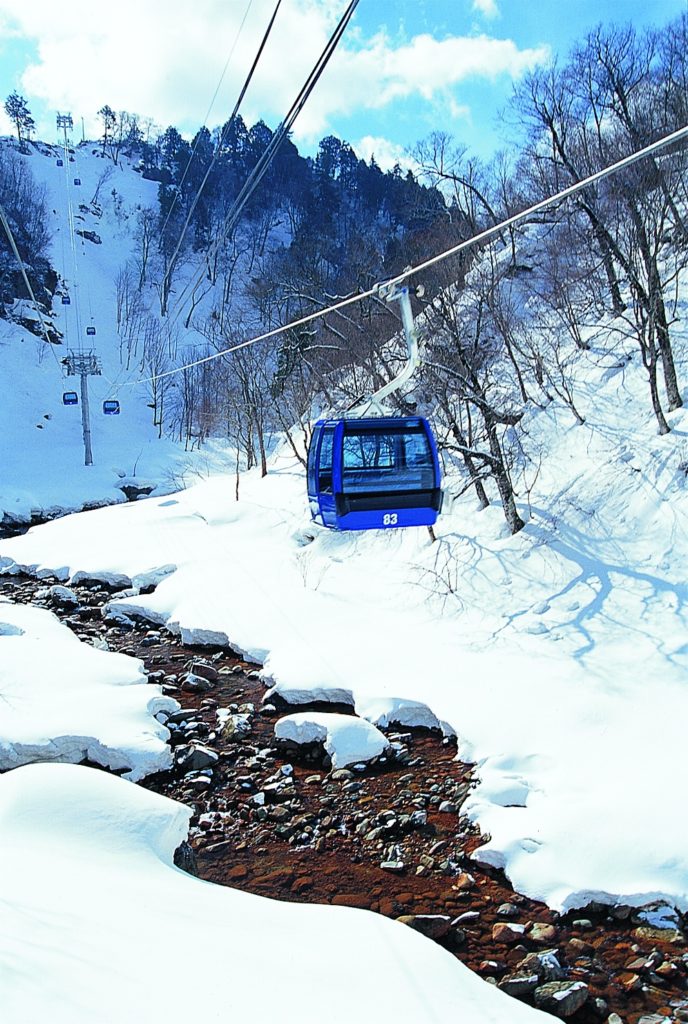
Q1 What is Japan's longest and shortest cableway?
"Dragon Dora" , which spans between Naeba and Kagura . Distance 5481m. This is top class in the world. The longest chairlift in operation is Appi Kogen's Sailer Quad (2143m) . On the other hand, Japan's shortest chairlift is the "No. 6 lift" at Heavens Sonohara, which is a whopping 85m.
The gondola with the largest elevation difference is Shizukuishi's "Shizukuishi No. 1 Gondola (849m) ." However, it stopped operating in 2008. The lift is Appi Kogen's " Zailer Quad (612m) ".
Q2 How many people are required for one cableway?
In the case of a lift, at least 4 people per lift, and in the case of a gondola, about 7 people work separately at the platform and the platform. Among them, the staff who are in charge and who have the qualification of "cableway technical manager" under the jurisdiction of the Ministry of Land, Infrastructure, Transport and Tourism will be the person in charge, who will visit the site from time to time and check it. This qualification is not OK once you get it, but you are always required to update your knowledge and skills, such as participating in training sessions on a regular basis.
Q3 How do cableway staff go up in the morning?
For gondolas and ropeways, the device that pulls the rope is on top of the mountain, and someone has to start it early in the morning. At Yuzawa Kogen and Maiko Snow Resort, where I interviewed, the staff in charge of this work would not go up the mountain by snowmobile, but would stay in the night duty room at the top of the mountain, get up early and operate the machine.
Q4 What does "romance lift" mean?
In the days when single lifts were the main thing, even if you went skiing as a couple, both of you were lonely on the lift. This name is thought to have been named in the sense of adding value to the newly introduced two-seater lift from such a background.
Text/Daisuke Mizorogi
Editing/STEEP Editorial Department Edit/STEEP
Source: Re-edited from 2018 BRAVOSKI vol.2

